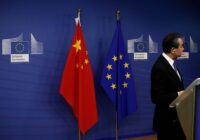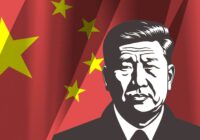The fact that today, within a week, the world is witnessing three separate summits tells us how dramatically the geopolitical landscape has changed.
To interpret human destiny, astrology observes the conjunction or alignment of celestial spheres, as the planets and stars move in their varying orbits and trajectories. Although the summits of mountains never vary their alignment, we are currently witnessing, in the world of geopolitics, a veritable astrological moment as we experience a rare alignment of political “summits.”
Geopolitical astrologers (pundits) are closely examining a fascinating conjunction of summits in this first half of June. The same weekend has offered us two summits conducted in parallel: the G7 in Quebec, which some have called the G6 +1, and the Shanghai Cooperation Organization (SCO) summit in Qingdao that brought together China, Russia, India, Pakistan and now, upon invitation, Iran and Turkey. And, of course, on June 12, the eagerly awaited summit in Singapore between Kim Jong-un and Donald Trump.
As if that wasn’t enough, we now learn that Vladimir Putin has requested a summit with Trump.
Here is today’s 3D definition:
Summit:
A place that powerful political leaders imagine as a perch from which they can observe the lay of the land and stake their claim on future control of plots of land or zones of influence that interest them in a spirit of, alternatively, cooperation, competition or outright conflict
Contextual note
Concerning the summit in Singapore, Trump is quoted as saying “that he will know ‘within a minute’ if Kim Jong Un is ‘serious.’” Time is money, after all, and with all these summits taking place one after the other, Trump won’t have many minutes to spare on one that he judges may be going nowhere. He made it clear that, for him, the meeting is a “one-time shot,” which, at the very least, shows that he hasn’t made much progress in his effort to understand Asian culture, a point The Daily Devil’s Dictionary may have given him too much credit for in a recent column.
Observers are focusing more on the contrast between the simultaneous summits of the G7 and SCO. The former ended in confusion after Trump’s late arrival and premature departure, followed by his tweets aimed at undermining the impression of superficial harmony the other six nations strove to put forward in their final communiqué. Reuters reports that Trump “threw the G7’s efforts to show a united front into disarray after he became angry with Canadian Prime Minister Justin Trudeau, and said he might double down on import tariffs by hitting the sensitive auto industry.”
In contrast, AFP informs us that the SCO “put on a show of unity contrasting with the acrimonious G7 meeting.” The SCO holds the vague promise of resolving, over time and thanks to monumental regional investments, the issues of rivalry between the two most populous nations of the world — China and India — and the permanent tensions, often bordering on war, between the two most conflicted historical neighbors and enemies, India and Pakistan.
Based on Justin’s false statements at his news conference, and the fact that Canada is charging massive Tariffs to our U.S. farmers, workers and companies, I have instructed our U.S. Reps not to endorse the Communique as we look at Tariffs on automobiles flooding the U.S. Market!
— Donald J. Trump (@realDonaldTrump) June 9, 2018
Reaffirming the ambitions and ideals of SCO, Chinese President Xi Jinping emphasized the contrast between the two summits: “Unilateralism, trade protectionism and a backlash against globalisation are taking new forms.” According to AFP, “Xi spoke up for the ‘pursuit of cooperation for mutual benefit.’”
Historical note
The concept of a “summit” is a recent historical invention. As the Financial Times reminds us, “Traditionally, history-making summits have been held between the leaders of great powers and dealt with matters of war and peace.” They were also unique events, focused on a single historical problem. The first meeting of this type referred to as a summit — Munich 1938 — brought together the leaders of Germany (Adolf Hitler), the UK (Neville Chamberlain), Italy (Benito Mussolini) and France (Édouard Daladier). Considered a success at the time, it has become a symbol of shameful capitulation leading directly to World War II.
The fact that today, within a week, the world is witnessing three separate summits, two of them involving the US and the third excluding it, tells us how dramatically the geopolitical landscape has changed. More significantly — even without knowing its shorter and longer-term outcomes — it indicates where that change is heading. The first lesson is that we are now living in a multipolar world, with new regional groupings. The summits of the Cold War years brought together the US and China in 1972 and then the US and Russia in Reykjavik in 1986. They were bilateral and governed by the binary logic of the Cold War.
The US-North Korea summit is a true anomaly, since it elevates an isolated nation with a feeble economy to the status of world power — a potential factor of serious humiliation for the US if it ends unfavorably, whether immediately or in the near future. The G7 conference is already branded as a failure and has taken place in a context of acrimonious rivalry between allies. The SCO summit is the first that doesn’t include the US or Europe and is focused on constructive projects, rather than prevention of war. There are numerous reasons to think its ambitions may never be realized, but it has started an important dialogue.
The 21st century has already made a clear break from the 20th century.
*[In the age of Oscar Wilde and Mark Twain, another American wit, the journalist Ambrose Bierce, produced a series of satirical definitions of commonly used terms, throwing light on their hidden meanings in real discourse. Bierce eventually collected and published them as a book, The Devil’s Dictionary, in 1911. We have shamelessly appropriated his title in the interest of continuing his wholesome pedagogical effort to enlighten generations of readers of the news.]
The views expressed in this article are the author’s own and do not necessarily reflect Fair Observer’s editorial policy.
Photo Credit: pantid123 / Shutterstock.com
Support Fair Observer
We rely on your support for our independence, diversity and quality.
For more than 10 years, Fair Observer has been free, fair and independent. No billionaire owns us, no advertisers control us. We are a reader-supported nonprofit. Unlike many other publications, we keep our content free for readers regardless of where they live or whether they can afford to pay. We have no paywalls and no ads.
In the post-truth era of fake news, echo chambers and filter bubbles, we publish a plurality of perspectives from around the world. Anyone can publish with us, but everyone goes through a rigorous editorial process. So, you get fact-checked, well-reasoned content instead of noise.
We publish 2,500+ voices from 90+ countries. We also conduct education and training programs
on subjects ranging from digital media and journalism to writing and critical thinking. This
doesn’t come cheap. Servers, editors, trainers and web developers cost
money.
Please consider supporting us on a regular basis as a recurring donor or a
sustaining member.
Will you support FO’s journalism?
We rely on your support for our independence, diversity and quality.






